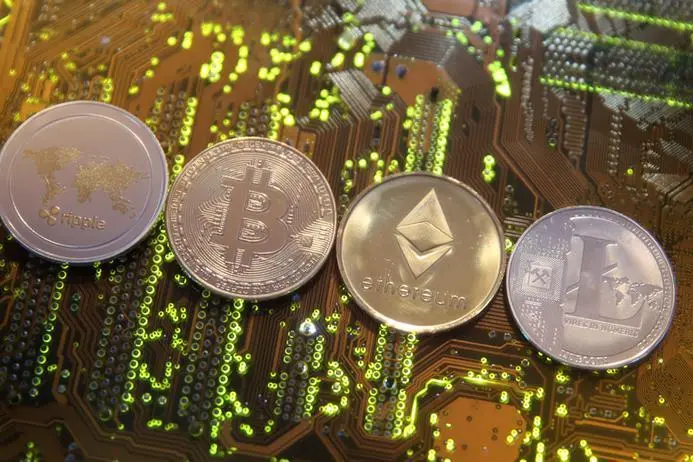PHOTO
(Our regular analysis of the wild world of cryptocurrencies)
Decentralized finance - DeFi - is getting a second wind.
The amount of money deposited in this breed of crypto projects has leapt in recent months, swept up by a rally in bitcoin driven by the launch of spot bitcoin ETFs in America.
The total value of tokens (TVL) deposited on DeFi-focused blockchains has risen by about 40% since November to about $60 billion, hitting its highest level since August 2022 last month, according to data provider DeFi Llama.
In an ironic twist, bitcoin's infiltration of the mainstream, centralized financial system has effectively powered risk-taking in the parallel decentralized crypto world.
"DeFi TVL rising is a proxy for rising speculation across the digital asset space, with people chasing the next narrative and the next hot thing," said Austin Alexander, co-founder of bitcoin transaction focused firm LayerTwo Labs.
Daily trading volumes on DeFi protocols jumped as high as $7.3 billion in early January, their highest since March 2023. The market capitalization of DeFi-linked crypto tokens has risen to $77 billion, from $72 billion at the start of December, as per CoinGecko.
The DeFi ethos is starkly different from that of the regulated financial system. It seeks to replicate the usual processes of investing, borrowing and trading, but in a decentralized world where peer-to-peer transactions on the blockchain are executed via smart contracts, with no banks or brokers acting as intermediaries.
The anticipation of lower U.S. interest rates has also boosted the appeal of DeFi protocols, where investors can deposit their crypto tokens in exchange for yields, many market participants say.
"For the first time in a year or so the rate that you can get in DeFi is higher than the U.S. Treasury rate," said Michael Rinko, analyst at Delphi Digital.
For example, the popular Aave protocol offered annual percentage rates on ethereum-based USDC stablecoin deposits of over 14%, according to tracker Aavescan.
"The market is front-running (Fed rate cuts) in terms of capital flowing to DeFi," said Phillip Shoemaker, executive director of decentralized ID platform Identity.com.
Beware the extreme volatility that has characterized this sector in recent years; deposits in DeFi-focused blockchains jumped from $17.3 billion in January 2021 to nearly $178 billion in December that year, before falling below $40 billion in December 2022, according to Defi Llama data.
SOLANA SOARS AND SLIPS
The recent rise in DeFi deposits has coincided with a surge in the prices of bitcoin and ethereum early in January, primarily driven by the American spot bitcoin ETFs (exchange-traded funds).
"Traders have greater liquidity because their bitcoin and ethereum is worth more, so they begin to go down the risk scale and venture into more risky assets," said Thomas Tang, vice president, investment lead at venture-capital firm Ryze Labs.
Yet despite a blistering start to the year, bitcoin and ethereum - the two biggest cryptocurrencies - have surrendered most of their gains and are now up just 0.2% and 0.5% respectively.
That has hit the prices of many DeFi tokens.
A CoinDesk index tracking DeFi-related tokens has fallen 13% in 2024, while the token of the Solana blockchain - one of the most popular DeFi chains - has slipped 5.7%.
Some market players think DeFi activity could be more sustainable this time round, given solana has quadrupled in price over the past six months, far outpacing bitcoin and ethereum.
Others foresee some tough months ahead for DeFi, with financial markets yet again pushing back expectations for interest-rate cuts.
It also remains to be seen how sustainable new DeFi yield offerings are, said Katie Talati, director of research at asset manager Arca.
"I don't think we'll immediately see the impact of rate cuts on DeFi activity, I think it will take some time to see users and activity trickle back in," Talati added.
(Reporting by Lisa Mattackal and Medha Singh in Bengaluru; Editing by Vidya Ranganathan and Pravin Char)





















